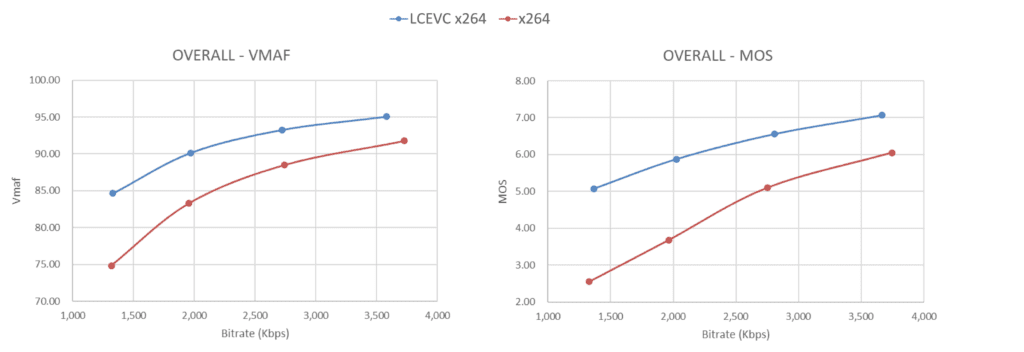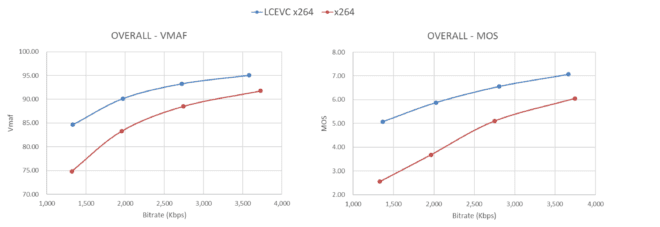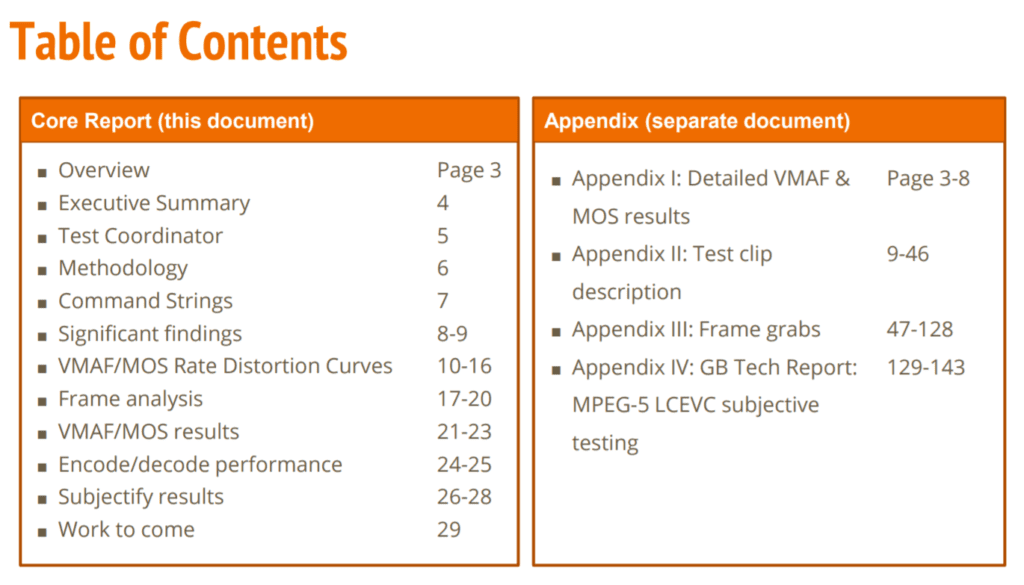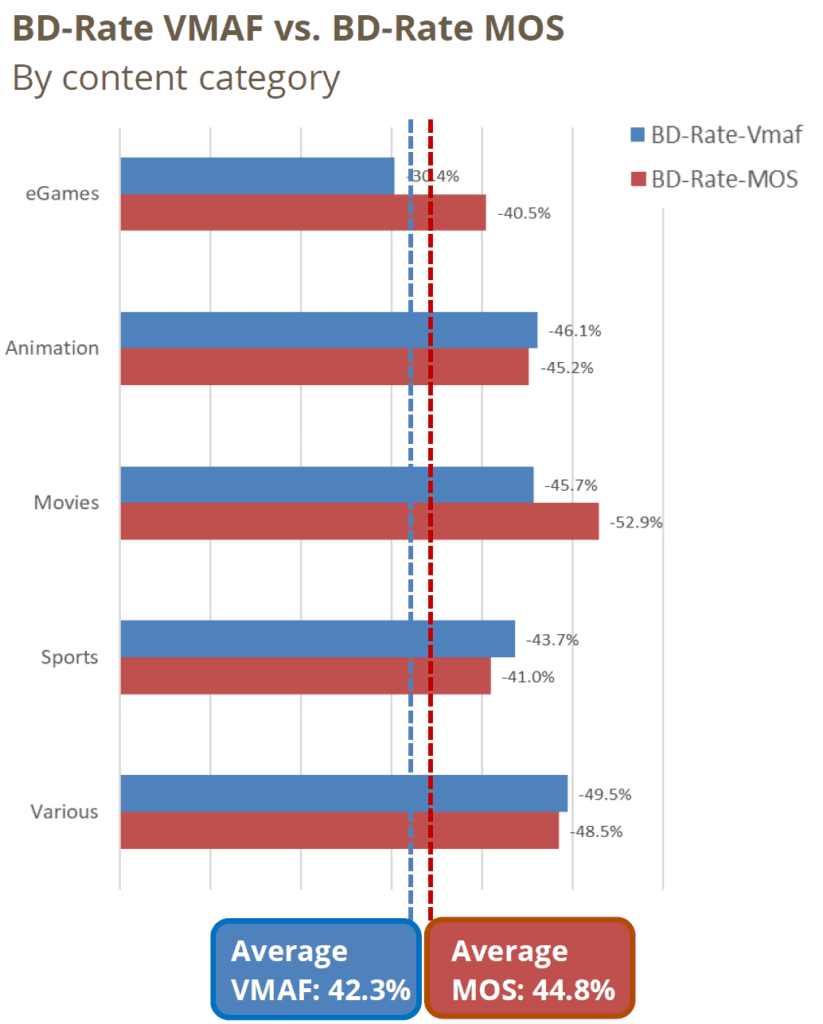Just a quick note to let you know that I’ve published a comprehensive report that documents the testing, quality, and performance of the Low Complexity Enhanced Video Codec (LCEVC) as developed by V-Nova and in the process of becoming standardized by MPEG. By way of background, I’ve been consulting with V-Nova to test LCEVC using a range of test files and test conditions.
For those in a hurry, here’s a link to the core report: Download Report. Here’s a link to the Appendices: Download Appendices. Here’s what’s in both.
Continuing the narrative, our tests included 33 test clips from a range of sources in multiple genres including animations, games, movies, sports, and various. During the tests, we compared LCEVC with x.264 as a base layer to x.264-encoded video to learn the savings that LCEVC could deliver over x.264. Test conditions were one-pass CBR to represent the live use scenario.
The report and appendices include the following components:
- Subjective Mean Opinion Score (MOS) comparisons performed by GB Tech.
- Subjective crowd-sourced comparisons performed by Subjectify
- Objective Quality Metrics: VMAF comparisons computed using FFmpeg with Rate-Distortion Curves and BD-Rate stats computed in Excel. For reference, BD-Rates also computed for PSNR, SSIM, MS-SSIM.
- File by file subjective evaluations using the Moscow Statue University Video Quality Measurement Tool Result Plot as a guide (upper left) and frame grabs on lower-quality frames (upper right)
Rate distortion graphs demonstrate that LCEVC with a base layer of x264 was clearly superior to full resolution x264 files in both MOS subjective scoring and VMAF (click the graph to view the charts at full resolution).
 Here are the BD-Rate savings found during our analysis (click the graph to view the charts at full resolution).
Here are the BD-Rate savings found during our analysis (click the graph to view the charts at full resolution).
Overall, the analysis shows that if you substitute LCEVC with a base layer of x264 for x.264 at 1080p resolution in a live use case you should achieve about 40% bandwidth savings without noticeable quality loss and you won’t need dedicated decoding hardware on the playback side. We’ll be performing additional analysis to compute the savings over a full encoding ladder in both live and VOD use cases.
Again, here’s a link to the core report: Download Report. Here’s a link to the Appendices: Download Appendices.
 Streaming Learning Center Where Streaming Professionals Learn to Excel
Streaming Learning Center Where Streaming Professionals Learn to Excel












Thx for the very detailed report, looking forward to see the H265 version.